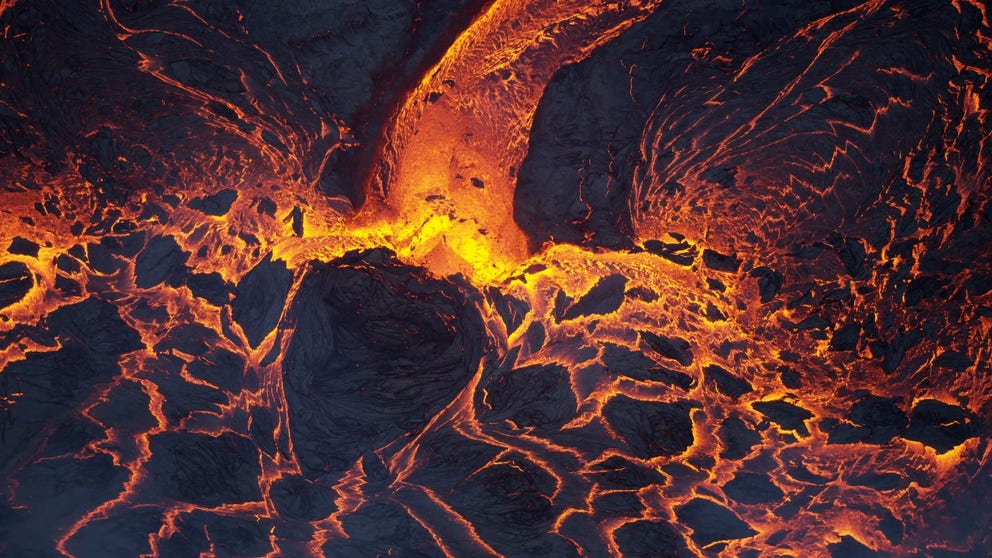How the largest volcanic eruption in history gave birth to 'Frankenstein'
The natural world -- and the human mind -- can create all sorts of monstrosities.
Watch lava flow in these mesmerizing volcanic eruptions around the world
Experience the power and majesty of a volcano up close in this awe-inspiring video.
"The rain pattered dismally against the panes, and my candle was nearly burnt out, when, by the glimmer of the half-extinguished light, I saw the dull yellow eye of the creature open."
This is the story of Frankenstein’s beast coming to life.
But before the creature caught its first glimpse of this world, another monster halfway around the globe violently awoke from its slumber.
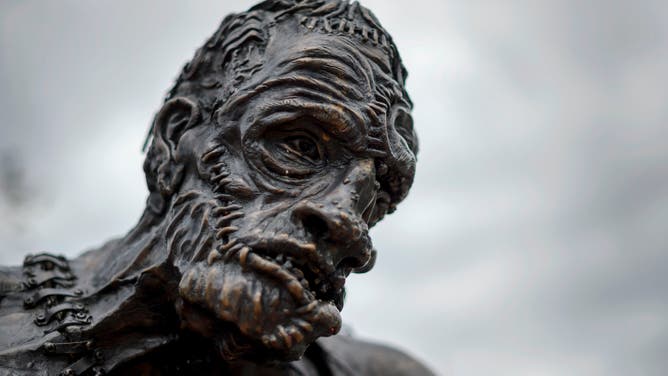
A statue of Frankenstein's monster in Geneva, Switzerland.
(Fabrice Coffrini/AFP / Getty Images)
In the 19th century, Indonesia’s Mount Tambora volcano burst wide open. As the largest volcanic eruption ever recorded, it devastated the lands and lives nearby — and set the stage for a global climatic shift.
Such a shift brought many people to their knees, but it also may have helped a budding author to rise and write about a monster of her own creation.
Awake in the dark
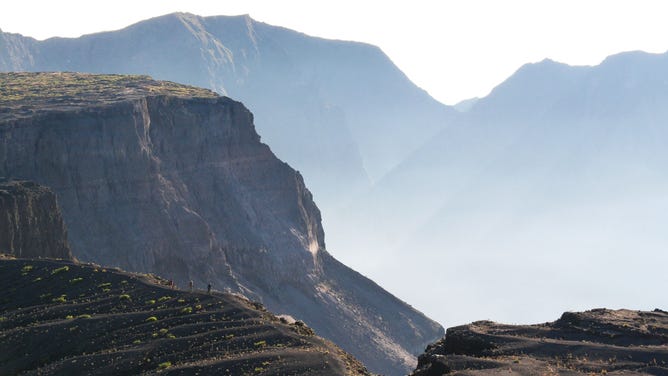
People walk along the mouth of the dormant Mount Tambora volcano.
(Adam Majendie/Bloomberg / Getty Images)
It began with little fanfare.
In 1814, a little smoke was seen coming out of Mount Tambora, but no one took much note of it.
That following year, everything changed.
"The volcano came to life very violently, with some very large explosions on the 5th of April," said Clive Oppenheimer, volcanologist and filmmaker at the University of Cambridge.
According to Oppenheimer, people living thousands of miles away from Mount Tambora’s explosions mistook them for cannons being fired. Troops were even deployed, as authorities believed they were under attack.
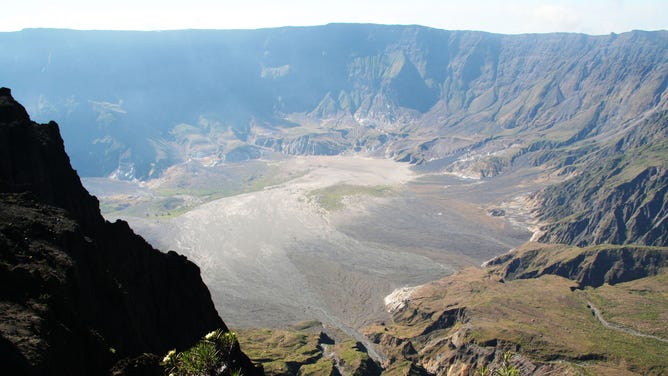
A view from the craters edge of Mount Tambora on the island of Sumbawa in Indonesia.
(Adam Majendie / Bloomberg / Getty Images)
But rather than being born of artillery, these blasts were born of Earth, triggering a series of events far deadlier than any manmade weapon at the time.
"On the 10th of April, an even greater, a really colossal eruption took place that turned day into night," said Oppenheimer. Ash from the volcano filled the air, creating complete darkness.
"This was an existential crisis," he said.
And it was only the beginning.
Once in a millennium
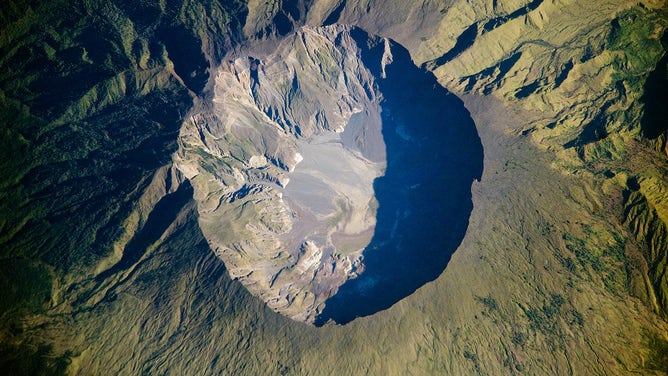
Mount Tambora, photographed from the International Space Station.
(ISS/NASA)
The eruption of Mount Tambora lasted for hours and had devastating impacts.
It caused the ground to shake and triggered tsunamis that raced across the sea. It flung so much material — and so much of the mountain itself — into the air, that the volcano shrank by over 4,000 feet, according to NOAA.
According to Oppenheimer, ash from the volcano traveled at great speeds down the sides of Mount Tambora, destroying everything in its path and taking 10,000 Indonesian lives almost immediately.
At least 162 killed, thousands evacuated after earthquake devastates Indonesia
The death toll continues to climb after a magnitude 5.6 earthquake shook Indonesia's main island of Java on Monday afternoon.
The eruption measured in at a magnitude of 7 on the Richter scale, or about a thousand times more powerful than the 1980 eruption of Mount St. Helens. Oppenheimer said events of this size are quite rare, only happening on average about once every thousand years.
But the fallout from Tambora’s eruption didn’t end in the days, weeks or months that followed.
Because of one particular gas emitted from the Indonesian volcano, the fatal ramifications of the eruption continued for years and rippled far beyond the country’s shores.
WHAT MAKES ‘PELE’S HAIR' DURING A VOLCANIC ERUPTION?
Global fallout

The winter of 1816 was so cold that Penobscot Bay in Maine froze solid. This killed off the fish species locals usually depended on, forcing them to eat another species, mackerel. This shift lasted long after the Year without a Summer ended, as seen by the mackerel fishermen in Penobscot Bay featured in this 1891 photo.
(NOAA)
According to Oppenheimer, the volcano released an estimated 30 to 60 million tons of sulfur dioxide gas into the stratosphere. At that altitude, the gas formed into minuscule particles that created a veil of dust around the globe.
This veil reflected enough sunlight to cool the global climate by about 5.4 degrees Fahrenheit (3 degrees Celsius), said Oppenheimer.
"Perhaps the biggest perturbation to climate was in 1816, and this became popularly known as the Year without a Summer."
Parts of Asia were devastated by unseasonably cool temperatures. For example, according to the study "Climatic Aftermath of the 1815 Tambora Eruption in China", a cold growing season destroyed crop yields in Yunnan Province and then led to record-breaking famine.
DROUGHT EXPOSES LOST CITIES, ANCIENT TREASURES IN CHINA
China drought uncovers 600-year-old Buddha
The drought in China caused river levels to drop and uncover a 600-year-old statue that is usually underwater.
In North America, newspapers and diaries from the time tell tales of the cold summer’s effects on the continent, such as snow showering parts of Canada and frost damaging corn yields in North Carolina.
According to Oppenheimer, crop yields were also ruined in parts of Europe, due to the cold temperatures and heavy rainfall. This led to skyrocketing crop prices, leaving tens of thousands of the poor to starve and develop diseases caused by malnourishment.
These abysmal times caused by unprecedented climatic events pushed many to the brink. But for others, this period became a time of reflection and creativity, as was the case for a then little-known author named Mary Shelley.
The modern Prometheus
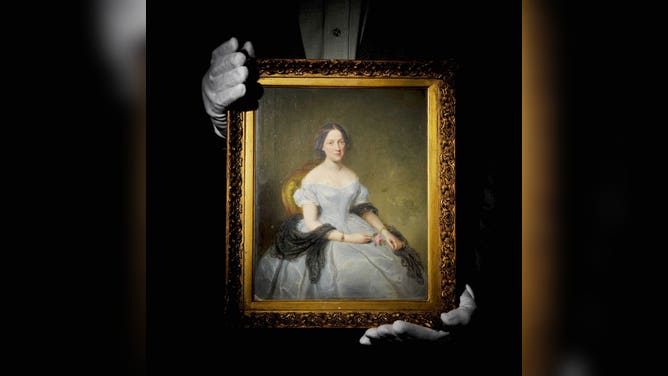
A portrait believed to be Mary Shelley, painted by Richard Rothwell.
(Ben Birchall/PA Images / Getty Images)
"She always had an independent spirit," said Catherine Reef, author of "Mary Shelley: the Strange True Tale of Frankenstein’s Creator". "She lived her life in a very unconventional way."
As the daughter of two writers, Shelley lived in an intellectually rich environment in England. However, she gave up her reputation and status for the sake of forbidden love with poet Percy Bysshe Shelley – a married man.
According to Reef, Shelley and her lover (who she would later marry) escaped to Switzerland to visit with esteemed writer Lord Byron in the summer of 1816.
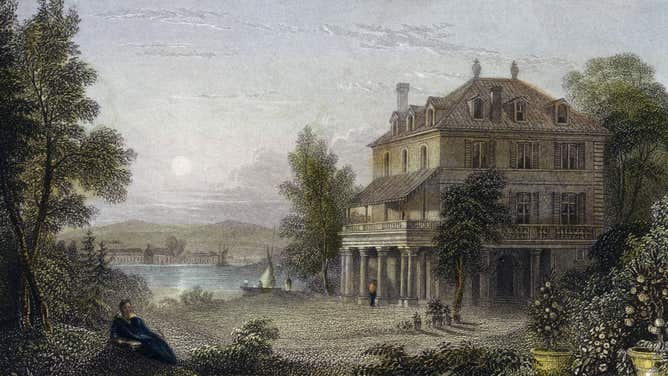
Villa Diodati, the vacation home of writer Lord Byron near Geneva, Switzerland. Mary Shelley (then Mary Godwin), Percy Shelley and their friends often gathered at Villa Diodati.
(DeAgostini / Getty Images)
As this was the Year without a Summer, the weather was unprecedentedly cold and rainy in Switzerland, forcing Shelley and her group to stay indoors quite a bit. Reef said they amused themselves by telling ghost stories and talking about issues of the day, one of which being whether science would ever be able to generate new life.
This percolation of ideas came to fruition when the group decided to write their own ghost stories. Shelley, just a teenager at the time, found her Eureka! moment in her dreams.
"She saw the figure of Victor Frankenstein involved in his experiment and bringing his creature to life," said Reef. "She knew she had the perfect idea for a story."
Earth and imagination, galvanized
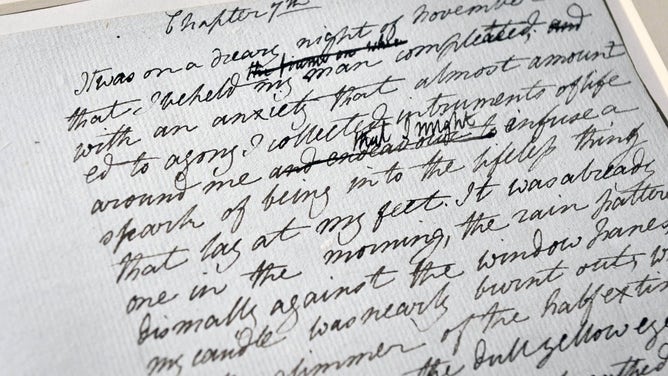
A page from the original manuscript of Mary Shelley's "Frankenstein", where Victor Frankenstein first describes the awakening of his creation.
(Ben Birchall/PA Images / Getty Images)
"Volcanism has played a really important role, I think, in world history," said Oppenheimer.
"Volcanoes are the leading natural cause of climate variability, and we see multiple instances back in time when very large eruptions led to big perturbations of climate," he added. "And then we teamed up with the historians and find out there were famines, there was migration and abandonment and conflict."
It seems only fitting that a period of such darkness and disarray, the Year without a Summer, would provide the backdrop for Shelley’s creation — a monster coming to life on a dark and stormy night, during the disastrous fallout of the largest volcanic eruption in history.
According to Reef, "Who knows if we would’ve gotten ‘Frankenstein’ without the volcanic eruption?"
